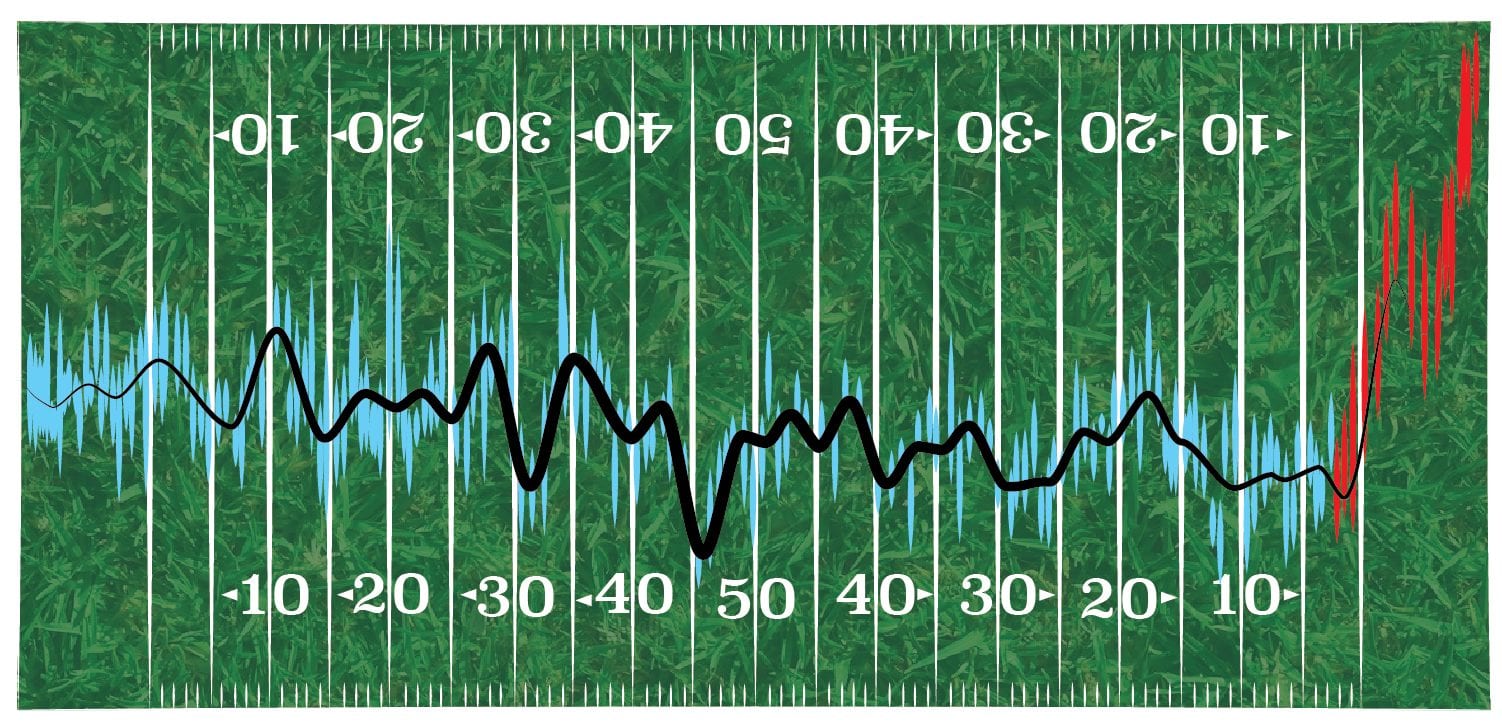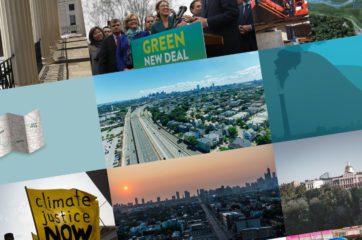“Putting a price on carbon is the difference between 4th & inches versus 4th & long. Regardless, we can no longer decide to punt.” – Michael Green
The National Football League reported revenue of $14 billion in 2016. Combined with the MLB, NBA, and NHL, the four American sports leagues bring in $37 billion per year. There are plenty of complexities and depth to enjoy in these sports, but what makes them popular is the simplicity of competition –– a clear opponent, well-defined goals, and one ultimate objective: winning.
Climate change is a different story; there is no clearly defined opponent. Instead, there exists an interconnected and complex set of factors, which have led us to where we are now: under a tight timeline to drastically change our ways. Solving the global crisis will require far more than pointing fingers, or throwing our hands in the air in disillusionment.
A Yale survey further identifies this disconnect. Less than half of Americans believe that there is scientific consensus about man-made global climate change. Only 53% believe that it is caused by human activities,49% believe it is already happening, and 41% believe it will harm them personally. However, we are improving, and the gravity of the situation is finally starting to sink in.

51% of the public is alarmed or concerned about global warming. These rest is cautious, disengaged, doubtful, or dismissive. Source: Yale Program on Climate Change Communication
The consequences of carbon pollution are diffuse and delayed, but present nonetheless. We pay for these consequences in the form of increased healthcare costs, property damage from flooding, and disrupted food supply chains. Solving the climate challenge requires us to connect these causes and cross community barriers, but doing so will require relatable frameworks and resonant messaging. Like sports, we need to find ways to translate the solution into clearly defined, actionable goals.
What would solving climate change look like as a game-winning football drive?
Let’s start on the zero-yard line in 2020. To take the ball 100 yards for a touchdown will require avoiding about 1.4 trillion cumulative metric tons of CO2 emissions through 2050, according to Drawdown: The Most Comprehensive Plan Ever Proposed to Reverse Global Warming. With the game on the line and a monumental task in front of us, let’s take it one play at a time.
These solutions are in no particular order, but let’s start the drive with onshore wind and solar – technologies that are already competitive and proliferating fast. Drawdown finds under conservative estimates that onshore wind turbines, solar farms, and rooftop solar can reduce emissions by 146 gigatons of carbon dioxide by 2050, or 10 yards.
First down.
This is ignoring other clean tech innovations such as geothermal, offshore wind, biomass, hydroelectricity, waste-to-energy, and a few more. Let’s combine those technologies with innovative efficiencies in buildings and cities such as district heating, insulation, smart buildings, and LED lighting, all of which together will produce trillions of dollars in net benefits for the end users. That gets us another 11 yards, or another first down.
What about women’s equality? Fighting for equal opportunity in education and family planning could reduce emissions by another 121 gigatons. Add in a quick running play (perhaps improved recycling and alternative cement?) and you’ve got another first down.
Go after the food sector, particularly through reduced food waste, plant-rich diets, and better agricultural practices, and you’ve just thrown a 22-yard gainer. Follow that up with electric vehicles, updated transportation infrastructure, and better disposal of refrigerators and air conditioners, and you’ve just put yourself in field goal range.
Land use practices can get you one more first down, but then reduction measures start to run dry. In fact, Drawdown’s conservative estimates across all solutions add up to about 1 trillion metric tons of CO2, or the 73-yard line. Winning the game will require exceeding the conservative expectations for these solutions – when Drawdown removes the conservative biases on their estimates, they find these solutions just reach global net zero emissions by 2050.
We will need carbon pricing to get there. On their website, Drawdown cites carbon pricing as “the single most impactful proposal that would accelerate the adoption of every solution enlisted.” By putting a price on carbon, we can raise vital funds for these initiatives, and ensure our emissions reductions exceed conservative expectations.
While seemingly insurmountable, climate change also has the potential to unify us. It intersects with nearly every other issue we need to tackle in this century – race, gender, and income inequality, food security, development, transportation, public health, immigration, and national security. Climate change has the potential to magnify all of these issues, just as tackling it presents us the opportunity to create intersectional solutions for the 21st century.
It will take inch-by-inch running plays and a few ambitious receiver routes, but we can score with collective and collaborative action. If divided equally, the average human only needs to move the ball forward 12 nanometers, which is about 80 times shorter than the diameter of a human hair. So when you see someone raise their fist and shout for a carbon price, know that they’re doing their part to help us find the end-zone.










